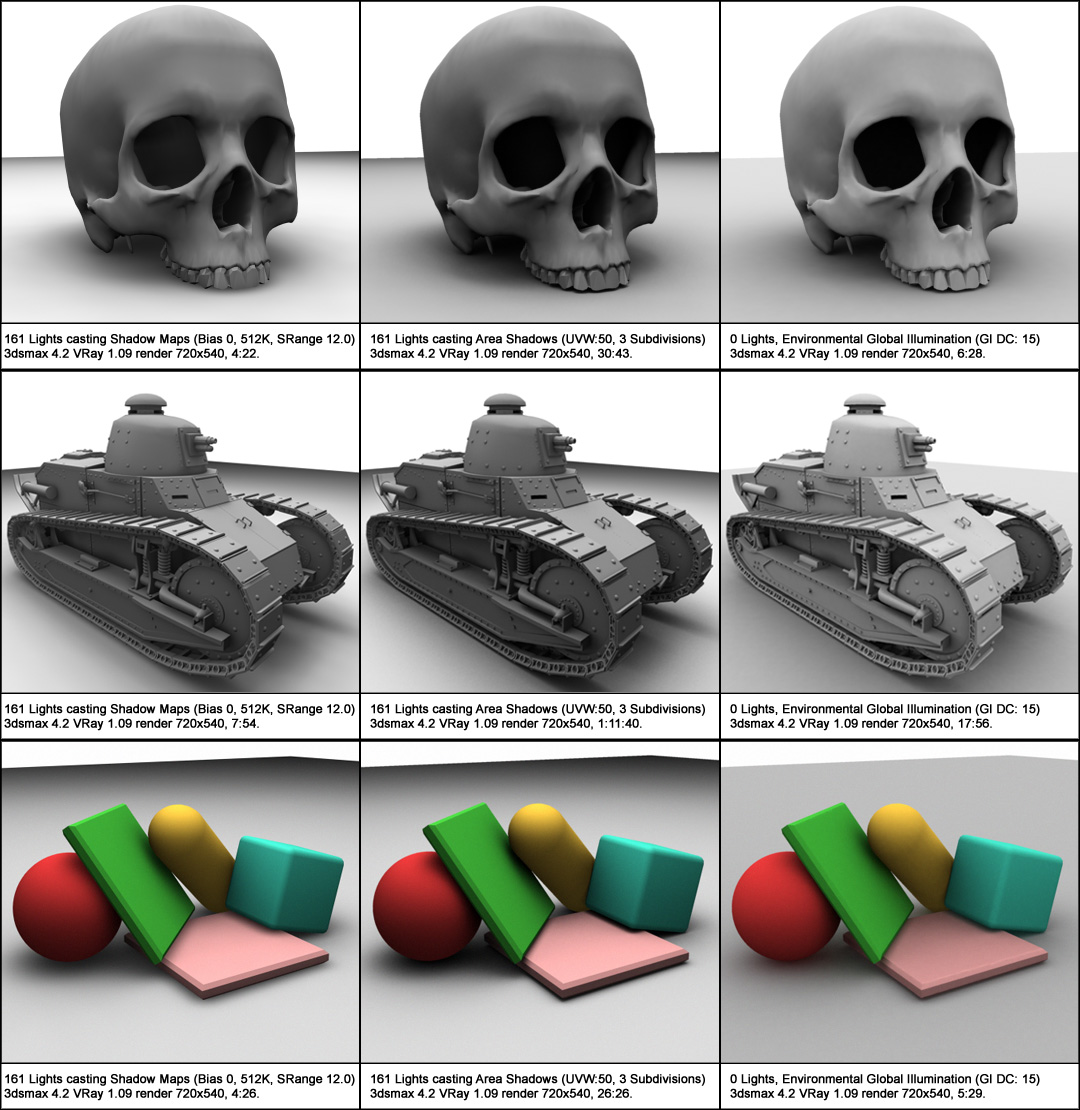
Dome lighting is actually a rather old rendering technique which was used several years ago for simulating global illumination before consumer-based global illumination renderers were widely available. The advantages are primarily speed, but at the sacrifice of (substantial) quality. In contrast, however, flickering in animation due to global illumination sample artifacting is eliminated because the shadows maps remain consistent throughout animation.
The concept of dome lighting is rather simple. Because global illumination rendering projects light samples from a hemispheric location surrounding the subject, a similar approach can be simulated by creating an array of lights arranged in a “dome” fashion around the subject.

Generally, any number of lights can be used but of course, the more lights, the heavier the toll on RAM and the longer the rendertimes. In these examples, 160 lights were used which is fairly excessive, but at the same time clearly show the benefits of using this technique. In each example, three images are shown. The first is the render of the subject using only shadow maps. This is always the fastest method, but also the poorest in quality. This can be seen in the lack of details, particularly at the contact points to the ground. The second image shows the dome lighting technique using area shadows. It is important to note that if this were the preferred method of global illumination synthesis, substantially fewer lights could and should be used in order to minimize the rendertimes. As you can see the results are almost identical to the third image (the real global illumination render) but the rendertimes are extremely long. While this provides similarly accurate results to the global illumination renders, it is impractical due to the lengthy rendertimes. The third and final image in each set is the real global illumination render, but optimized to include only the primary light bounce, no subsequent light bounces. This is why the real global illumination render is quite fast. Should the subjects have diffuse texture maps as well as secondary light bounces enabled, the rendertimes would be somewhat longer.
One important note to mention is that dome lighting will not produce radiance (color bleed), a key component of global illumination rendering. Unfortunately, this is part of the quality sacrifice associated with dome lighting. Should this be required, additional cheats can be incorporated such as object-localized coloured lights. Please check out the Simulating Radiance project for this.
Each image in the gallery was originally rendered at 720×540 on a P4 1.4GHz computer, with 768MB RAM.
Created by Richard Rosenman.